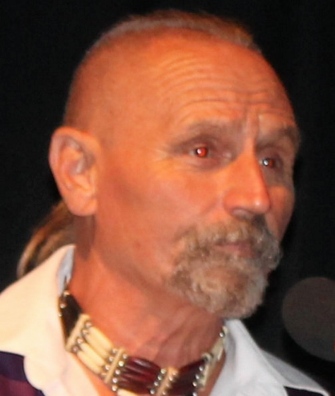
Sacred Medicine and Peace Village was situated in the middle of the Wyoming Valley with its main center on the bluff in Forty Fort overlooking the Susquehanna, “Mother of Waters.”
The Haudenosaunee (Iroquoi) Nations were the original peoples and farmed the lush fields and grew medicines in the scared springs for over 10,000 years. The Seneca Nation was the most populous of the Six Nations who called Wyoming Valley home.
The Seneca town of Kataroquen extended from the Wyoming Monument to the fertile fishing beach at Kirby Park. Two major Indian highways traveled through Kataroquen; the Seneca trail followed the west side of the river shore, and the Great Warrior Path (Wyoming Avenue) traveled through the center of lush Wyoming Valley.
Major points of cultured interest existed throughout the town. Near the Wyoming Monument area, fields of corn, beans and squash (the three sisters) extended for miles from the river’s edge to the mountains of the west. A large clay deposit beach, which still exists today in Forty Fort, supplied clay for medicines and pottery. Just south of the clay beach, a large fishing camp harvested an abundant supply of bass, shad and trout. There was a gentle waterfall there, known as Wyoming Falls. It supplied oxygen for the large fish populations south of Fish Island and the beach at Kirby Park; there the largest shad haul ever recorded on the Susquehanna took place in the late 1700s.
At the entrance to Kirby Park, where there is a symbolic circle in the concrete sidewalk, four large scared elm trees once grew.
It was here at the four Great Elms that many council meetings took place when the first matriarchal democracy in the world was formed. Kataroquen was like our nation’s Camp David where the Six Nations of the Haudenosaunee were united under the “Great Law of Peace.”
Thomas Jefferson and Benjamin Franklin were so impressed by this matriarchal democracy that they used it to help unite the 13 colonies in our present form of democracy.
Extending along the west side riverfront, pure artesian springs helped grow herbal medicines of the Seneca Medical Society.
The Seneca had a holistic form of natural medicine that focused on disease prevention through exercise and sound nutrition. The Jesuit missionaries noted in their diaries in the 1600s that the Seneca healers were excellent surgeons and were noted for how well they kept wounds clean to heal, unlike the European doctors at that time. The Seneca would say, “Water is power and power is medicine.” The most potent medical herbs were grown in this sacred mineral-rich spring water. Lush strawberry gardens grew along the spring water trails. Medicinal herbs like lemon balm, white mint, black mint, comfrey and watercress were also grown in these spring water gardens. Watermelon and cantaloupe gardens grew between and around the sweet corn gardens.
It was an “Indian Paradise” Garden.
Historian Charles Miner in his book, “The History of Wyoming,” described this Indian Paradise “majestic in the extent, the depths and the loftiness of its forests, sublime as it came from the hand of the Creator, little short of omnipotence. Such were common scenes when the white people first came to Wyoming which seems to have been formed by nature, a perfect Indian paradise.” Timothy Pickering, Peace Ambassador for George Washington said, “the most beautiful tract of land my eyes have ever beheld, industrious husbandmen have made the whole a garden.”
Chief Hendricks of the Mohawk Nation claimed “the Wyoming Valley was sacred to the Haudenosaunee, never to be sold, an ancient council and burial ground. The Haudenosaunee always believed they were deviously cheated of the Wyoming Valley by the valley’s white settlers.”
A smallpox epidemic in the valley devastated the Haudenosaunee population and the remaining survivors were pushed out by the invading army of John Sullivan.
His “Campaign of Terror” against the Haudenosaunee began in Indian Paradise (Wyoming) and ended in western New York after destroying 60 villages and 10,000 acres of corn, squash and apple orchards. Every burial site was desecrated and items of value robbed to help pay for the campaign. The Haudenosaunee believed the Creator gifted them with the Susquehanna “Mother of Waters”and considered them to be the actual bloodline of Mother Earth.
They promised the Creator they would protect the river forever.
Reisinger is a member of the Seneca Sacred Site Committee.